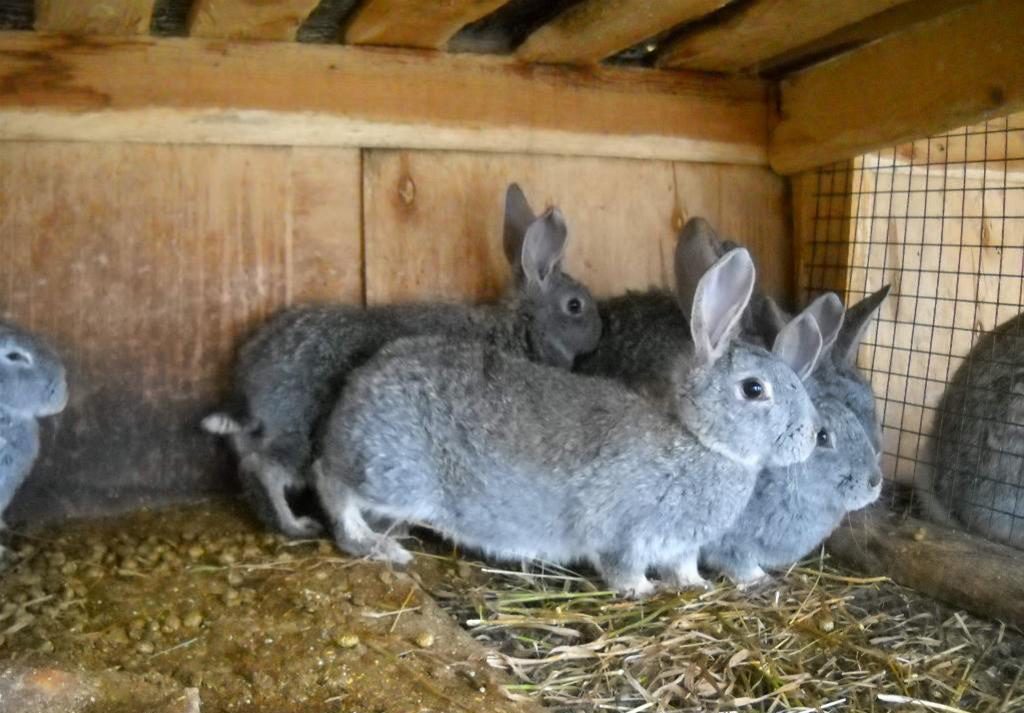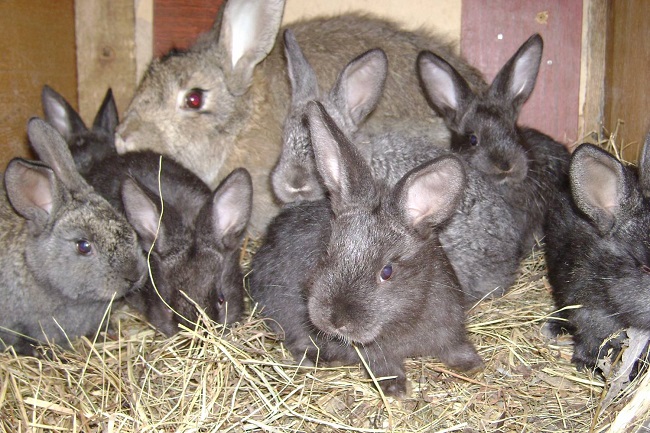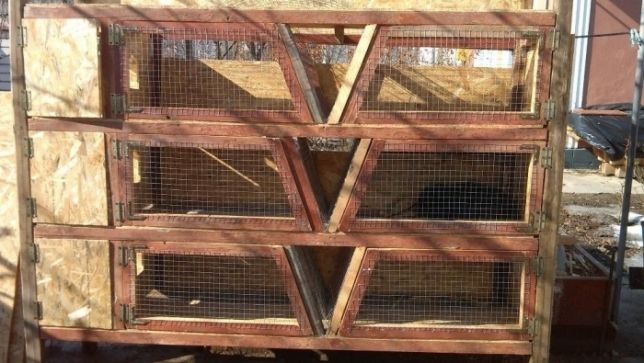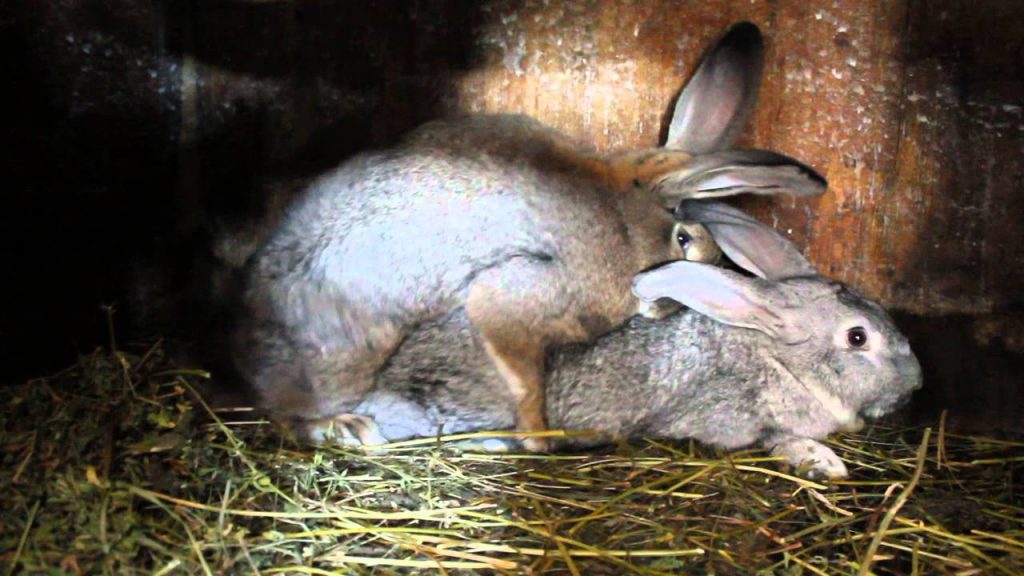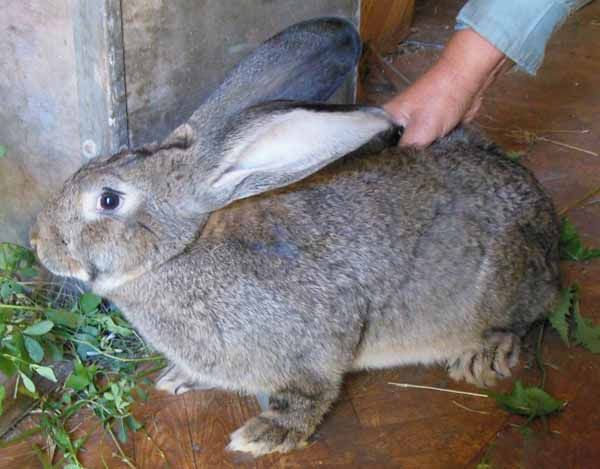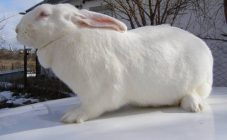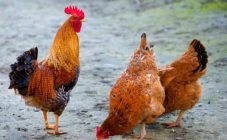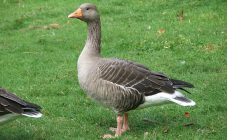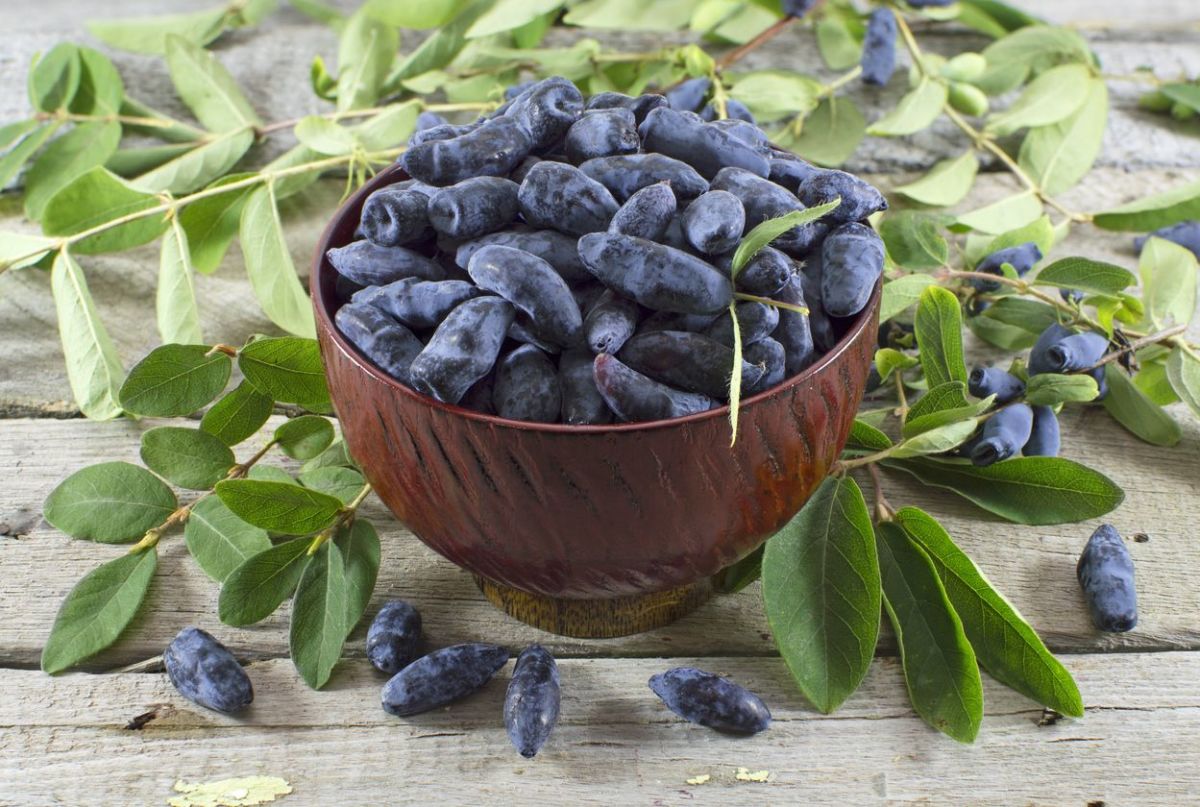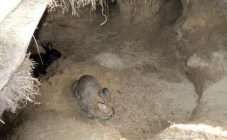Content:
He can be called Gulliver among his own kind. The breed was bred in 1952 in the Poltava region, by crossing. It adapts well to the conditions provided and has high performance. The progenitor is Flandre, who was crossed with local animals, thanks to which the animal is adapted to cold conditions, and also has excellent meat and fur parameters.
Short story
In the 20s. in the Union, they launched a program for rabbit breeding on an industrial scale and purchased various breeds for this, including the Flandre - Belgian. In the Poltava region. selected for breeding "Petrovsky state farm". They chose local animals with adaptation to habitat conditions, and from Flandre the breed received dimensions.
Characteristics of the breed
In English called Gray rabbit. These rabbits have a really heroic size, however, these are not all the advantages. Firstly, these rabbits are unpretentious in care, they can be grown not only on farms specially created for growing, but even at home.
Here's how the Gray Giant rabbits differ:
- Their chest is wide. In this case, the body is longish.
- According to the standard, an adult weighs a minimum of 4 kg, a maximum weight of 7.
- Their heads are round.
- The body is 70 cm long.
- They have a well-expressed maternal instinct. The ears of rabbits are elongated, forming the letter V.
- They are quite disease resistant.
Chinchillas are similar to a similar description. Therefore, you should understand where the difference is between them, so as not to confuse. Chinchillas have one specificity - a distinctive feature that is located on the back of the rabbit's head. This is a white strip, it looks very much like a wedge. The Gray Giant does not have a wedge.
The darkest hairs are on the back of the head, on the belly the hair is grayish, but lighter and thinner.
There are two types of colors in total, the first belongs to Aguti, or a wild hare. The coat is dark gray, the tips are dark, there may be inclusions of red. Rabbits of this color are the most common.
There is a variety that has a pure color: black or white, but very rarely. They are very unpretentious in terms of maintenance and care. They have been adapted for cold climates as well as temperate ones.
By qualification, this breed belongs to the meat-skin type. At the same time, rabbit fur has a moderate density. The slaughter yield is on average 57%, but meat is not considered particularly valuable. The same applies to fur, however, the skin area is quite large, the villi are thick, which compensates for this disadvantage.
How to care
You need a cage that will be quite spacious for a gray pet, food should be balanced, no direct sunlight, no drafts.
However, there are some differences from other breeds, they are as follows:
- The area of one cage should be at least 80 by 90 cm, because the rabbit is big, a real giant among the like.
- If there is a rabbit, then she must have a nest box.
- Up to 4 months, small rabbits can be with their mother, after which they must be planted.
- It is important to know that in no case should you overfeed rabbits, otherwise they will simply stop breeding.
The big plus of the Gray Giant rabbit breed is its rather low cost. Young ones - they sell for $ 3, grown up - for about 8. The owner should clarify what the diet was, and then follow it so that the pet does not have stress.
It is also desirable to have vaccinations, but it is difficult to check for such.
They can be grown in bulk. They adapt pretty quickly, no special conditions are required. Females feed their babies and treat them with care.
Experienced farmers say that this breed has high profitability, mainly due to the fact that rabbits are resistant to various pathologies, and also eat almost everything.
The advantages include their great growth, rather good fertility.
Disadvantages of the breed:
- Flanders are much higher in commercial quality.
- Sometimes rabbits with curved or thin limbs come across in the droppings.
- One rabbit from birth weighs about 81 g, at 2 months - 1.5 kg, on the third - 2. Since the breed is meat-skinned, the weight gain is insufficient for him.
- These rabbits eat a lot.
The rabbits are harvested every day or at least once every three days. There should be no parasites in the room, larvae and bad odors. It is better to choose a wooden cage.
The premises are treated twice a year, as well as cells from various pests and rodents, depending on the frequency of their appearance. A blowtorch is used for disinfection, arranging firing. This procedure is absolutely safe for rabbits.
If it is planned to move new animals into the cages, or the rabbit must give birth, if it is known about infectious diseases, disinfection is mandatory. A blowtorch is used in this case, as well as a 10% bleach solution, or the floor and walls are whitened with slaked lime.
Feeding
In order for the Gray Giant rabbit to gain good weight, feed is given in small quantities. The fact is that their intestinal tract will work only when a new portion of food arrives, such is the physiology of the Giants.
Food is given often, it should be varied. From monotonous food rabbits get sick, and productivity decreases markedly. Obesity or weight loss should not be allowed, the occurrence of such rabbits is not recommended.
If the food is dry, then be sure to give fresh water. The feeding schedule should be stable so that both the farmer is comfortable and the rabbit's gastrointestinal tract is normalized.
Be sure to pay attention to the nutrition of rabbits, females who carry cubs or who have given birth, as well as males selected for reproduction. They must be given vitamins and various minerals.
When autumn or spring comes, the diet is changed within a week, but not immediately. It is imperative to have juicy food available, for example, greens, but you need to give it along with hay. It is recommended to give greens in a dried state. Vegetables can be given in season, the main thing is not spoiled.
The grain must be crushed or mixed. The fact is that cereal rabbits cannot always eat. When feeding with compound feed, they replace cereals or supplement them. If you have the equipment, you can cook it yourself.
In winter, there are no additional vitamins, in early spring the same thing. Therefore, experienced farmers always germinate grains and then give them to rabbits as vitamins.
Breeding
Breeding rabbits is quite simple, the main thing is to find suitable breeders. In the fall, readiness for okrol decreases, but if you take the pets to a warm place with additional lighting, it increases again. Rabbits grow quite quickly, growth slowdown occurs only after 2 months of development.
Experienced farmers wait up to six months for a thoroughbred pet to grow up completely, only then they are engaged in breeding.
All adult animals are divided into families: 1 male and 5 females. It is best to keep a special journal where you need to record everything related to breeding. When breeding in the male, the characteristics of the breed should be much more pronounced than in females.
If the female starts poking around in the litter, trying to build a nest, she does not really want to eat, she is worried, most likely, she has a hunting period. You can check her readiness for mating by stroking her back, she raises her ass. In addition, the loop becomes brighter and larger in size. The hunt lasts 6 days and takes place every 14 days.
1 female is planted only 4 times a day. In this case, 2 times in the morning and the same amount in the evening.
Pregnancy lasts approximately 32 days. Three or four days before giving birth, the female prepares for them, collecting wool on her tummy, then begins to line the place where she will give birth. In this way she makes herself a nest. It is recommended to buy or make special boxes.
After she gives birth, you need to watch out for the rabbits. If they crawl away from mom, they may die. There is no need to help during childbirth, only in exceptional cases you can call a veterinarian.
Advantages and disadvantages
Pros:
- For some people, the Gray Giant breed is a favorite due to its friendly nature and unpretentiousness.
- If slaughtered at 6-7 months, the meat is much better in taste.
- Females take care of babies for a long time.
- Adapted to the cold.
- You can even keep it at home.
- High fertility.
- Thick fur.
- They are relatively cheap.
- They are unpretentious and omnivorous.
Minuses:
- Farmers point out that it is imperative to measure the dimensions of the rabbits and, on this basis, arrange for them a living space.
- The diet must be varied, the water must be changed daily and fed often in small portions. Those. some money and time must be spent on meal planning and care.
- Flanders is better for meat quality.
- After 7 months, the taste of the meat drops, it makes no sense to hammer.
- Neither fur nor meat are of high value.
Reviews and recommendations of farmers
Breeders say they have tried several breeds and deliberately bought Gray Giants. You can sell meat, skins. It is noticed that upon reaching the age of seven months, one rabbit can gain the same kilogram. Further, they gain weight much more slowly, therefore, they are no longer fattened. If you need to slaughter a rabbit, slaughter is done exactly at 7 months. Further, their meat is considered not so tasty.
Taking into account the above, as well as fertility, at least a year one rabbit can bring 24 babies, maximum 32.


